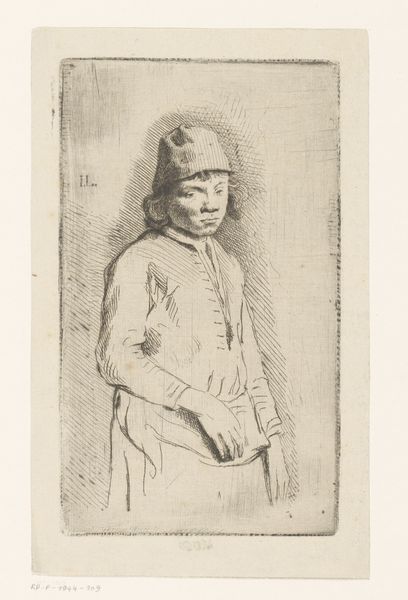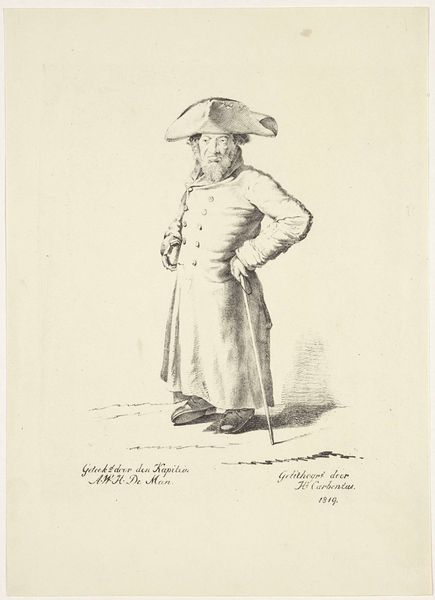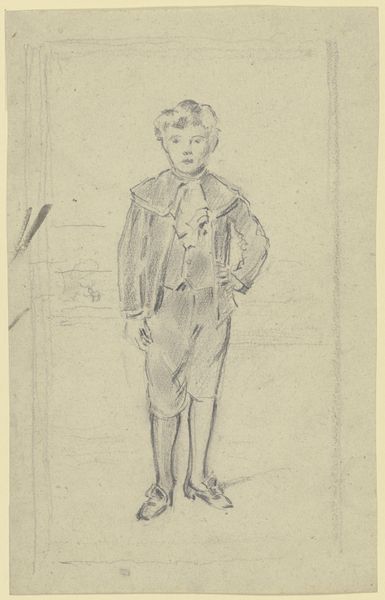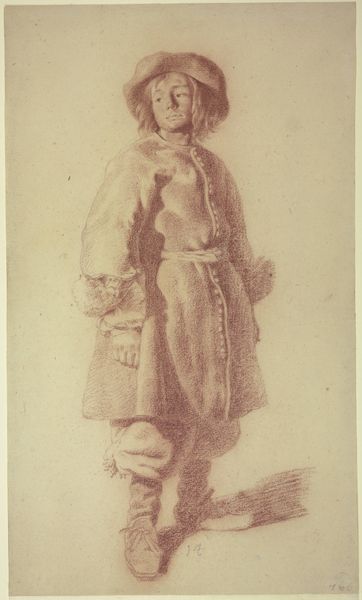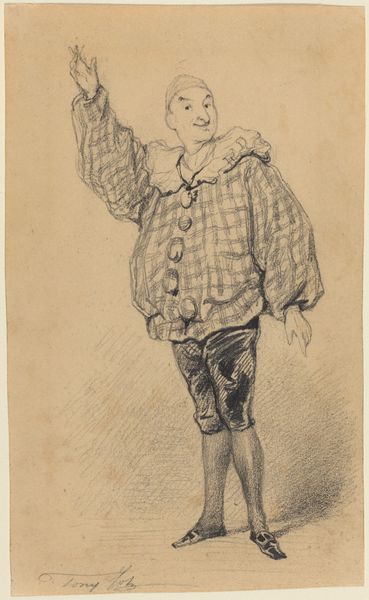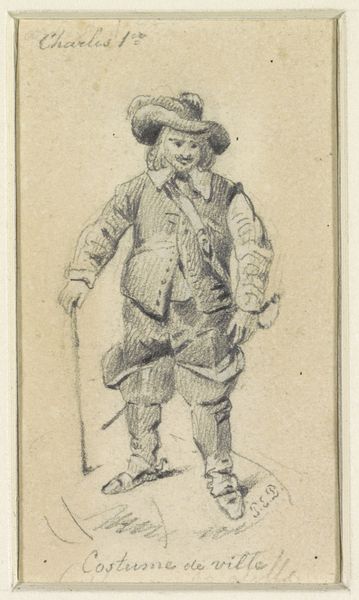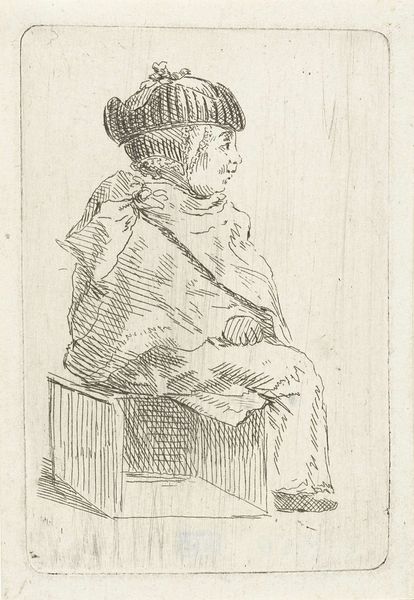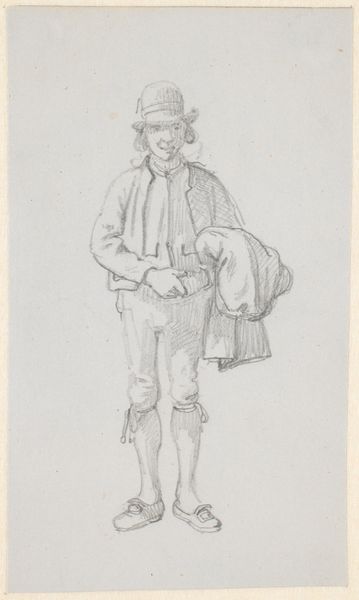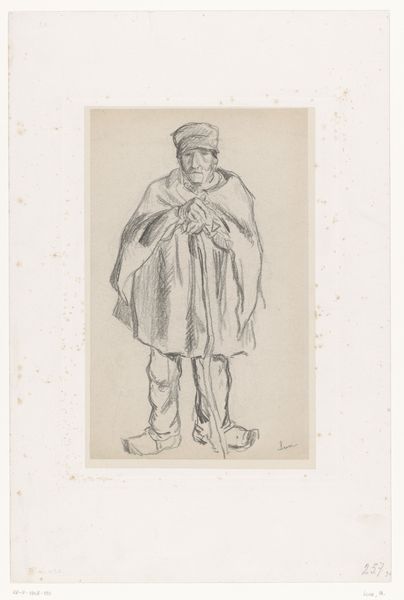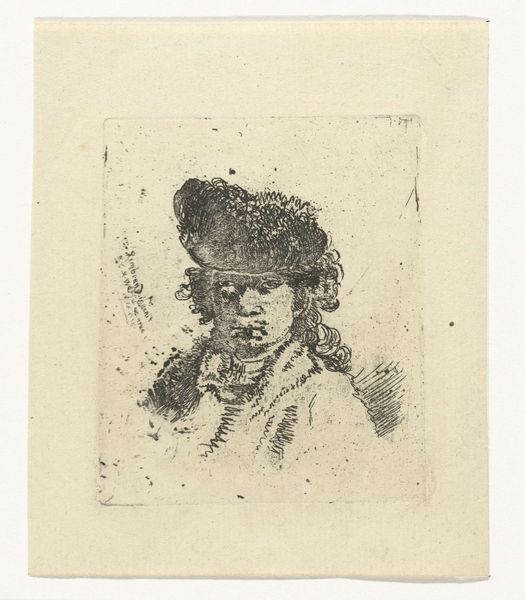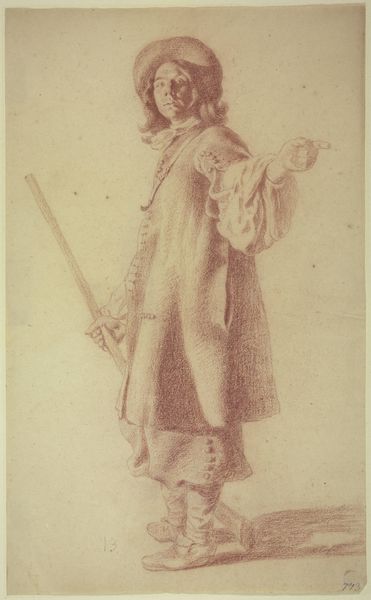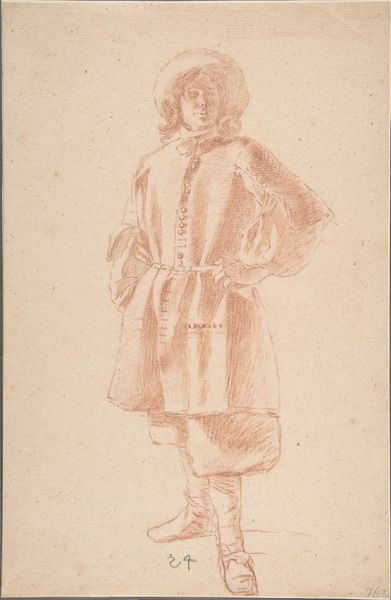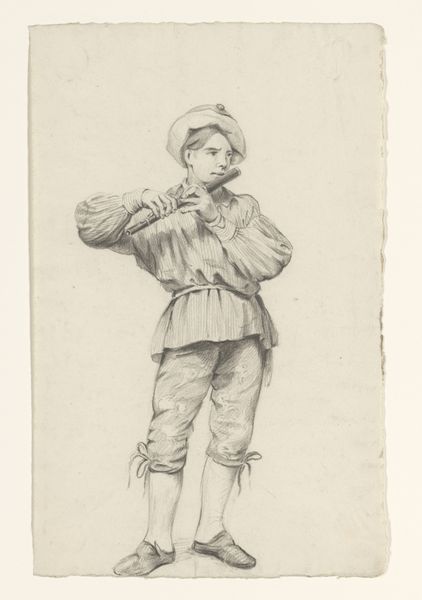
drawing, print, etching
#
portrait
#
drawing
# print
#
etching
Dimensions: Plate: 7 3/8 × 4 5/16 in. (18.7 × 11 cm) Sheet: 7 15/16 × 4 3/4 in. (20.1 × 12 cm)
Copyright: Public Domain
Editor: Here we have "Portrait of a Boy", an etching made by an anonymous artist, now residing at the Metropolitan Museum of Art. There’s something quite delicate and hesitant about the lines. What do you see in it? Curator: I see a fascinating intersection of class and representation. This portrait, produced via etching, opens questions about who could afford such a likeness. Prints made art more accessible to the burgeoning middle class. Considering this accessibility, does the boy’s somewhat humble garb affect how we view the artwork's potential public reception at the time? Editor: It makes me wonder if this was intended as a demonstration piece of a particular technique rather than solely about this specific boy, since you point out that prints were becoming popular around that time. Curator: Precisely! This etching potentially functions on multiple levels. Consider how the availability of prints shaped artists' reputations. Would this piece, accessible to a wider audience, have amplified the artist’s brand, regardless of the subject? And, we should also note the date is unknown. Was it intended for a specific purpose, perhaps pedagogical or commercial? These prints were commodities. Editor: I hadn't considered that—the idea of art as a promotional tool in a developing market is fascinating. Now that you've explained how prints worked, I can see how this "Portrait of a Boy" is less about an individual, but represents socio-economic shifts. Curator: Exactly. We can move past a purely aesthetic judgment to an analysis rooted in societal changes and market forces. Considering art this way is critical for understanding its place and purpose.
Comments
No comments
Be the first to comment and join the conversation on the ultimate creative platform.
